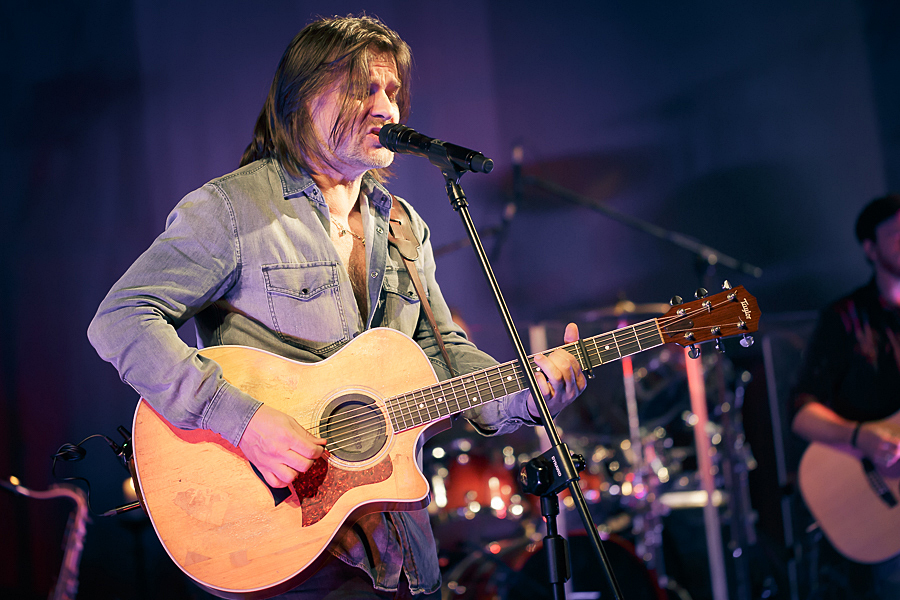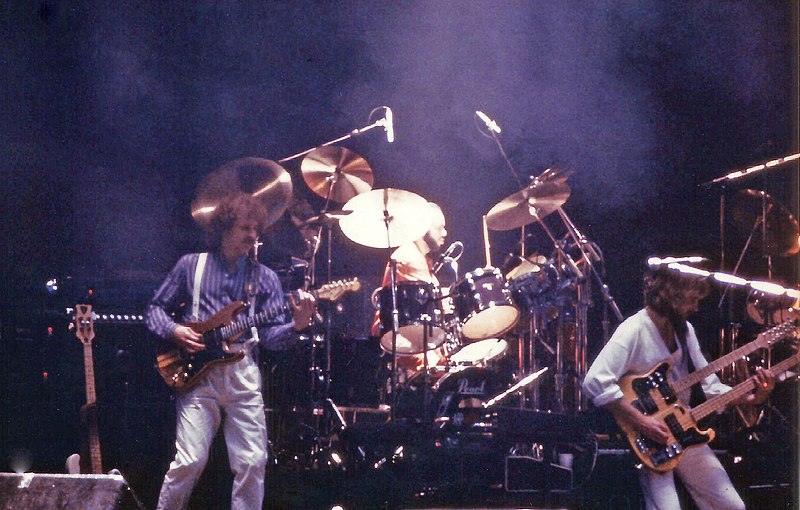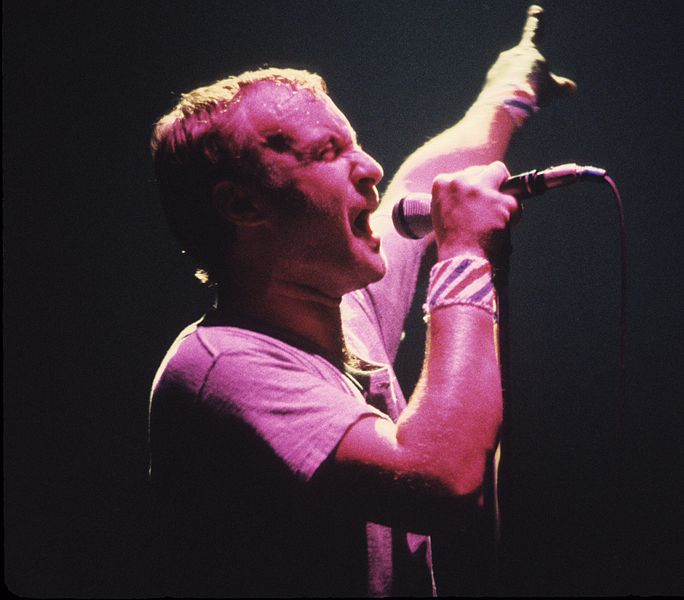On June 6, 1997, Tony Banks and Mike Rutherford announced the new lead singer of Genesis following Phil Collins’ departure: 28-year-old Ray Wilson.
When Phil Collins revealed in March 1996 that he would be leaving Genesis after 25 years, fans were eager to learn who would step into his shoes. Genesis had already weathered the departure of their original frontman, Peter Gabriel, back in 1975. Now, two decades later, Tony Banks (keyboards) and Mike Rutherford (guitars), the remaining founding members, were determined to carry on once more.
They began writing and recording new material, searching for a vocalist who could help them shape the band’s next chapter. Rumors swirled in the music press, speculating about possible replacements. Then, on June 6, 1997, it was official: Ray Wilson would be the new voice of Genesis.
Who is Ray Wilson?
Born in Dumfries, Scotland, on September 8, 1968, Ray had previously fronted the band Guaranteed Pure and was best known for his work with Stiltskin, whose hit single “Inside” reached number one in 1994, thanks in part to its use in a Levi’s commercial. So, while Ray wasn’t an unknown figure in music, the stylistic gap between Stiltskin and Genesis left both his fans and Genesis fans surprised and cautious.
Reflecting on the moment in the Songbook DVD, Ray recalled:
‘I was in my little studio writing songs. It was ten in the morning, I was making a coffee, and Tony Smith, the manager of Genesis, was on the phone: ‘Would you like to come and audition to replace Phil Collins?”
By then, Phil Collins’ massive solo success had blurred the public’s perception of Genesis. It was often seen as “Phil Collins and his band”. Taking over that role and shifting that image would be no easy task.
Calling All Stations
Ray joined Tony and Mike at The Farm, Genesis’ private studio in Surrey, to begin recording what would become Calling All Stations. Most of the songs had already been written by Banks and Rutherford, but Ray contributed several ideas of his own. The result was a darker, more melancholic record. The vibrant energy and accessible pop sensibility Phil had brought to the group were now absent, and with it, part of the familiar Genesis chemistry.
Still, Ray’s emotionally rich vocals suited the mood of the new material. His voice, more reminiscent of Peter Gabriel than Phil Collins, blended well with the brooding tone of the songs. Calling All Stations, like its predecessor We Can’t Dance, was produced by Nick Davis.
Three singles were released from the album: “Congo”, “Shipwrecked”, and “Not About Us”. Ray co-wrote the latter, along with “Small Talk” and “There Must Be Some Other Way.” Drums on the record were provided by Israeli session musician Nir Zidkyahu and Nick D’Virgilio from American prog-rock band Spock’s Beard.
Despite Ray’s strong performance, critics were less than kind. NME wrote dismissively that “the world doesn’t care enough about Genesis to make the effort” and claimed people had “forgotten why they were once any good.” Q magazine criticized the album for offering “just darkness, confusion, individual isolation,” calling it “one-paced and one-dimensional.”
Live in 1998: Ray on Tour
On tour, however, Ray proved his versatility. The setlist spanned the entire Genesis catalog from the pop-era hits like “Invisible Touch”, “No Son Of Mine”, and an acoustic version of “Follow You Follow Me”, to later epics such as “Home by the Sea”, and even classic Gabriel-era tracks like “Carpet Crawlers” and “The Lamb Lies Down on Broadway.” New material from Calling All Stations also held up well live. Some songs, like the title track, even sounded better on stage.
Ray, Mike, and Tony were joined on tour by Nir Zidkyahu on drums and Anthony Drennan on guitar and bass, effectively filling the shoes of Chester Thompson and Daryl Stuermer.
Commercial Struggles
Despite reaching No. 2 in the UK, Calling All Stations underperformed in the U.S., peaking at just No. 54. Ticket sales also fell short of expectations. As a result, the production and scale of the tour were scaled back and the planned American leg was cancelled entirely.
After the 1998 tour, Tony Banks and Mike Rutherford decided to put Genesis on indefinite hold.
Looking Back
Although this wasn’t the end of Genesis, in 1998 it certainly felt like it. And sadly, Ray Wilson, thrust into a difficult situation, was unfairly blamed by some critics and fans for the band’s lack of commercial success during this era.
But this criticism doesn’t hold up. Ray brought a unique voice and delivered both the new material and the classics whether originally sung by Peter Gabriel or Phil Collins with emotion and distinction.
Following the end of Genesis, Ray took time to regroup before launching a solo career. He has since released several solo albums and continues to perform live, often including Genesis songs in his setlists.
Title photo: Ray Wilson live in Dortmund in 2017 (Photo: André Wilms of ‘The Photography Of Mister Ilms)‘.

















